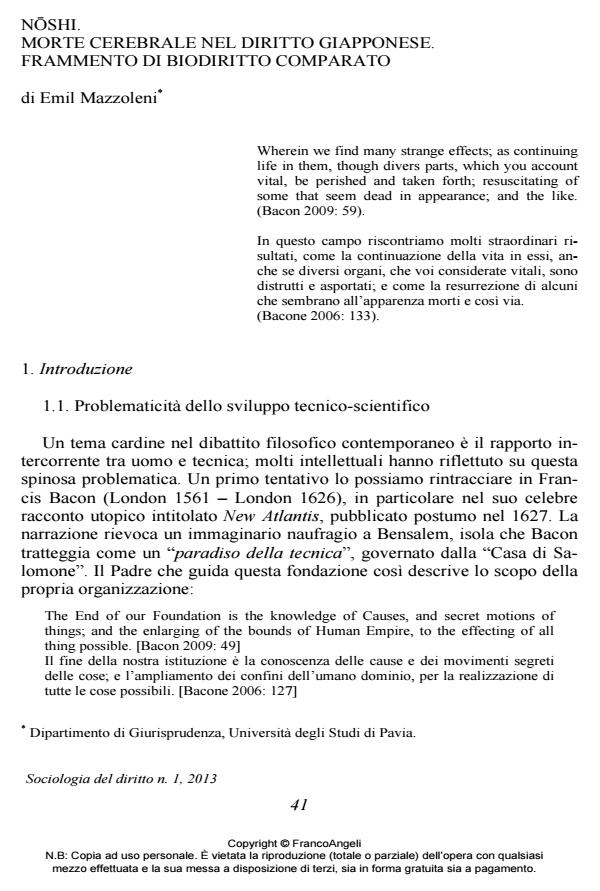Noshi. Brain death in Japanese law. A fragment of comparative biolaw
Journal title SOCIOLOGIA DEL DIRITTO
Author/s Emil Mazzoleni
Publishing Year 2013 Issue 2013/1
Language Italian Pages 15 P. 41-55 File size 210 KB
DOI 10.3280/SD2013-001003
DOI is like a bar code for intellectual property: to have more infomation
click here
Below, you can see the article first page
If you want to buy this article in PDF format, you can do it, following the instructions to buy download credits

FrancoAngeli is member of Publishers International Linking Association, Inc (PILA), a not-for-profit association which run the CrossRef service enabling links to and from online scholarly content.
Today’s scientific and technological progress has generated not only ethical, but also legal problems. In practice, the innovative clinical therapy used to resuscitate patients in cardiac arrest has obliged increasing numbers of states to review the legal criteria they apply to certifying death. The global spread of the standard based on brain death has met with resistance in Japan, however, where legislation is still very restrictive. This paper sets out to describe the Japanese legislation and the legislative process that led to its enactment, as well as identifying some philosophical, legal and cultural reasons that explain why legislative safeguards should be adopted when enshrining the criterion of brain death in legislation. Il dossier raccoglie, in versione riveduta, i contributi al convegno Giustizia e verità: Una ricognizione della funzione di verità del diritto, tenutosi a Milano il 27 febbraio 2012, che da diverse prospettive riflettono sulla relazione esistente tra diritto, processo e verità.
Keywords: Brain death - Japanese law - Organ transplants - Technological development - Biolaw]
Emil Mazzoleni, Noshi. Morte cerebrale nel diritto giapponese. Frammento di biodiritto comparato in "SOCIOLOGIA DEL DIRITTO " 1/2013, pp 41-55, DOI: 10.3280/SD2013-001003